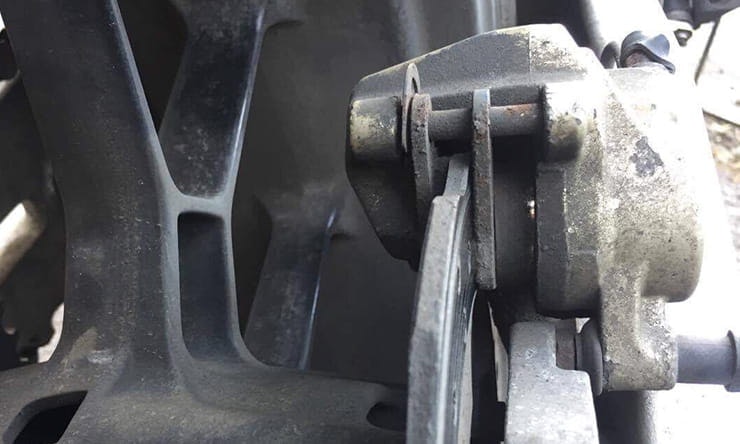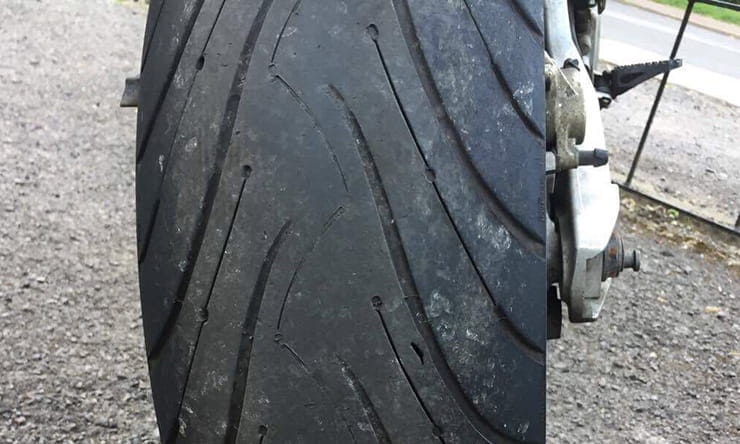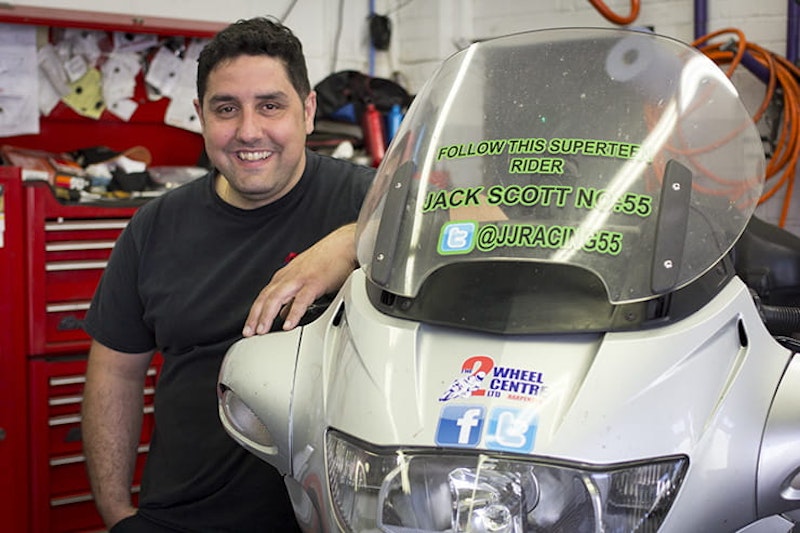Bike Maintenance: When to change your tyres and pads
By John Milbank
Consumer Editor of Bennetts BikeSocial
28.07.2017
Nick Nomikos is the Sales and Service manager of The Two Wheel Centre in Harpenden. An MoT tester since 2002, he’s worked at the family-owned shop since it opened in 1991; “If drawing attention to the importance of basic bike maintenance encourages more people to keep an eye on their bikes, then we’ve won!”
What's wrong with this bike?
This Aprilia Dorsoduro came in for general maintenance – the customer had just brought it to us for a service, but the rear tyre was down to the limit, and the pads were on the metal.
Why is it important to change brake pads and tyres?
It’s unlikely we need to explain either to you really – if you’re trying to slow a 220kg bike from 70mph, pressing metal on metal isn’t going to do the job particularly well. And slick tyres might work on dry tracks, but road rubber that’s worn to the limit isn’t the same thing. Besides the way the tyre will move and generate or shed heat, when the tread’s heavily worn, it won’t shift water anywhere near as well as it should.
The amount of water a tyre can move will vary greatly depending on the model. Any hoop that’s got less than 5% tread pattern is rated as NHS – Non Highway Service (not for road use), but regardless of what you fit, running them until the tread’s heavily worn away will make them a lot less secure in the wet.
The legal minimum tread depth of a motorcycle tyre (over 50cc) is 1mm across three quarters of the width of the pattern, with visible tread on the remaining quarter. For motorcycles under 50cc, the law only requires that the original tread pattern be clearly visible. Though we’d suggest that the bikes that are most likely to be used by the youngest and least experienced riders should probably have at least as safe tyres as the bigger machines…
When to change your tyres and brake pads
Many people are trying to stretch what they have. This customer knew he had to bring the bike in for a service, so just waited. But he uses that bike every day. He did know that the tyre would need changing, but he wasn’t aware of the pads. It’s so important to keep an eye on your service items, and there’s really no excuse on a bike. It’s usually hard to see the pads on a car, but these are in plain sight – just make a habit of looking over your pads, fluids and tyres every time you wash it.
You know how many miles you do each year, and you know that you’ll get maybe 5000 to 8000 (if you’re lucky) out of a rear – you can budget for the replacement. This guy had spent the money and got some decent Michelin Pilots, so why run them until they’re bald? You don’t get the performance that you’re paying for. If he comes off, it’s going to cost him a lot more than a pair of tyres…
For more advice on maintaining brake calipers, click here
For advice on how to choose tyres, click here
Change your pads BEFORE this happens
Here's another bike with brake pads that have been allowed to wear dangerously...
Basic motorcycle maintenance is taught in the CBT, but a lot of riders forget about it. If you keep an eye on your bike, you can budget for any upcoming issues. As Nick says: “You should check your bike at least every month (really, before each journey). If you want to ride on a Sunday, check it on the Wednesday – put it on charge, check the tyres, chain, oil, coolant, brake fluid... If you don’t look over it, how can you be sure it hasn’t developed a leak? And keeping your bike clean is a great way to really know it inside out.”


